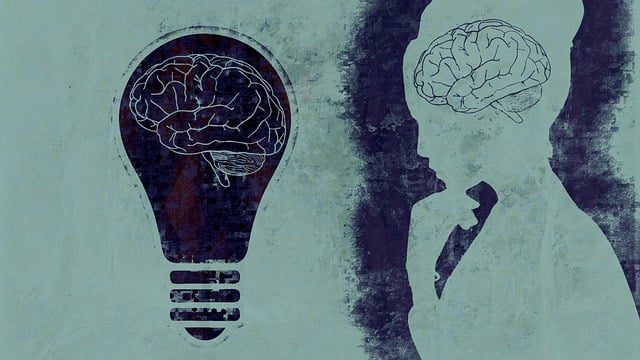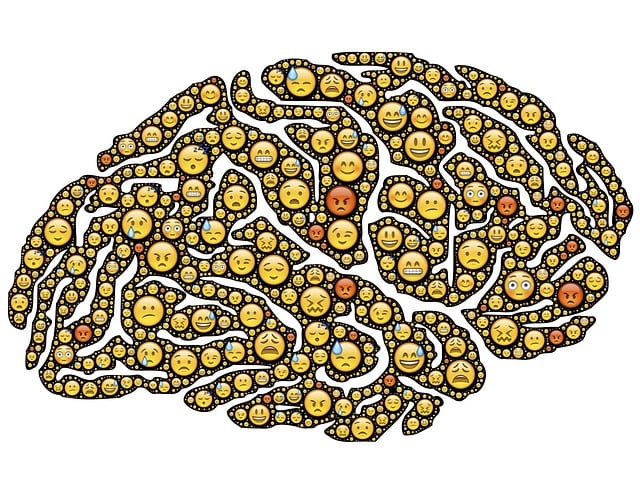Burnout among healthcare providers, especially pediatric therapists, is a growing concern due to high-stress environments and complex emotional demands. Early recognition of burnout symptoms, such as cynicism and decreased productivity, is vital. Effective prevention strategies include building resilience through emotional intelligence training, providing crisis intervention guidance, and implementing community outreach programs for better access to care. Key methods like compassion cultivation practices, mindfulness, and meditation reduce stress, enhance well-being, and improve patient outcomes, including tailored suicide prevention strategies for young children. Supportive work environments, with regular workshops and open communication, further prevent burnout and promote holistic mental health awareness.
“Healthcare provider burnout is a growing concern, impacting not just individuals but the entire healthcare system. This article delves into effective strategies to combat burnout among medical professionals, focusing on pediatric mental health as a critical area of interest. We explore red flags and evidence-based practices, emphasizing self-care techniques and supportive work environments. By implementing these strategies, healthcare providers can enhance their well-being and improve patient outcomes, including crucial aspects of therapy for young children and suicide prevention.”
- Understanding Burnout Among Healthcare Providers
- Identifying Red Flags in Pediatric Mental Health
- Evidence-Based Strategies for Prevention
- The Role of Self-Care and Mindfulness Techniques
- Fostering Supportive Work Environments
Understanding Burnout Among Healthcare Providers

Burnout among healthcare providers is a growing concern, especially considering the high-stress environment they work in. It’s essential to recognize that burnout isn’t merely fatigue; it’s a complex state of emotional exhaustion, depersonalization, and reduced personal accomplishment, often driven by prolonged exposure to overwhelming workloads, emotional demands, and a lack of control or support. This phenomenon is particularly pertinent among those who specialize in therapy for young children, where the delicate nature of their work can lead to increased stress and emotional strain if not adequately managed.
Understanding burnout early on is crucial. Symptoms may include cynicism towards patients, detachment from work, decreased productivity, and even thoughts of leaving the profession. In light of this, implementing effective burnout prevention strategies for healthcare providers becomes paramount. Enhancing emotional intelligence through training can play a significant role in building resilience. Additionally, access to crisis intervention guidance and support systems can help professionals navigate stressful situations, including those related to therapy for young children and suicide prevention, ensuring they have the tools needed to maintain well-being and quality patient care.
Identifying Red Flags in Pediatric Mental Health

Recognizing red flags in pediatric mental health is a critical component of healthcare provider burnout prevention strategies. Young children may struggle to communicate their feelings verbally, making it essential for providers to be attuned to non-verbal cues and behavioral changes. Common indicators include persistent irritability, significant changes in appetite or sleep patterns, withdrawal from social interactions, and sudden decline in academic performance. Early identification allows for timely intervention, which can include therapy for young children struggling with anxiety, depression, or trauma.
Implementing community outreach programs and social skills training can further support pediatric mental health. These initiatives not only enhance access to care but also foster a supportive environment where children feel safe to express their emotions. By addressing these concerns proactively, healthcare providers can reduce the risk of burnout associated with managing complex cases and contribute to the overall well-being of young patients. This, in turn, strengthens their ability to provide effective suicide prevention strategies tailored to the unique needs of pediatric populations.
Evidence-Based Strategies for Prevention

Preventing burnout among healthcare providers is a multifaceted approach that has gained significant attention in recent years. Studies show that evidence-based strategies can significantly mitigate risks, enhancing both provider well-being and patient outcomes. One such strategy is incorporating Emotional Intelligence into medical education and practice settings. This involves fostering self-awareness, empathy, and effective communication skills to better manage stress and connect with patients on a deeper level.
Additionally, Compassion Cultivation Practices, grounded in mindfulness and meditation, have proven effective in reducing burnout. These practices encourage healthcare providers to cultivate non-judgmental awareness of their emotions and those of their patients, promoting emotional regulation and creating a more compassionate clinical environment. Even for young children experiencing mental health challenges, such as those at risk for therapy for young children suicide prevention, these strategies can be adapted to help them develop healthy coping mechanisms and emotional resilience.
The Role of Self-Care and Mindfulness Techniques

In the ever-demanding healthcare sector, self-care and mindfulness techniques play a pivotal role in preventing burnout among professionals. These practices, such as compassion cultivation and emotional well-being promotion techniques, empower providers to maintain their mental health awareness while caring for others. By incorporating meditation, deep breathing exercises, and other mindfulness practices into their daily routines, healthcare workers can significantly reduce stress levels and enhance their overall resilience.
In light of the crucial role that emotional well-being plays in preventing burnout, it’s worth noting that these strategies are not limited to adults. Even therapy for young children can incorporate mindfulness techniques to support their mental health and help them develop coping mechanisms at an early age. This holistic approach, combined with mental health awareness campaigns, ensures a healthier, more compassionate workforce capable of providing quality care without burning out.
Fostering Supportive Work Environments

Creating supportive work environments is a vital strategy to prevent burnout among healthcare providers. This involves fostering a culture that prioritizes emotional intelligence and mental wellness. By implementing regular stress management workshops and mental wellness coaching programs development, organizations can equip staff with tools to navigate challenging situations, enhance resilience, and promote self-care.
A key aspect is ensuring open communication channels where professionals feel comfortable discussing their experiences, concerns, and ideas for improvement. This supportive atmosphere extends beyond the workplace, encouraging a holistic approach to well-being that includes initiatives like therapy for young children and suicide prevention programs, catering to the unique needs of healthcare providers.
Healthcare provider burnout is a pressing issue, especially in high-demand settings like pediatric care. By understanding the signs of burnout and implementing evidence-based strategies, such as self-care practices and supportive work environments, healthcare professionals can better navigate this challenge. Fostering open conversations about mental health, including suicide prevention among young children, is crucial for creating a culture that prioritizes well-being. Through these measures, we can ensure healthcare providers remain resilient and dedicated to delivering quality care.














